Spring Salon for Young Artists Held at Peggy Guggenheim Museumgallery Art of This Century
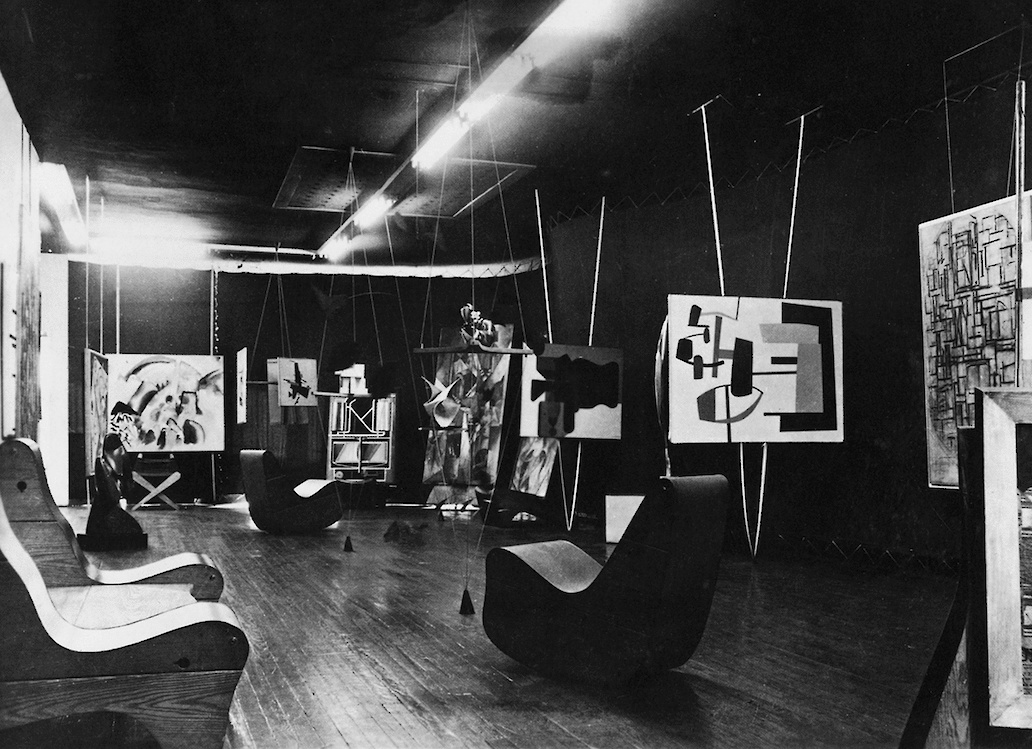
The abstruse gallery of Peggy Guggenheim'due south museum-gallery Art of This Century, 30 W 57th Street, New York, 1942
Art of This Century is inseparable from Peggy Guggenheim'due south claim to a identify in the history of twentieth century fine art.
An inquiry into this museum-gallery's importance for what was to emerge as a crucial period in the evolution of American painting is tantamount to assessing Peggy'southward personal contribution to the ineffable grid of forces and influences that gave rise to Abstruse Expressionism. The dual function of Art of This Century (a permanent collection and a selling gallery with temporary shows) aptly captures Peggy's position on the crossroads betwixt a European by and an American future. The permanent collection, installed with remarkable conceptual inventiveness in Frederick Kiesler'due south outlandish Abstract, Surrealist, and Kinetic galleries, was a further tessera in the mosaic of the New York artists' highly developed sensitivity to European art. The small temporary exhibition spaces, or Daylight Gallery, were the venue for the opportunities that Peggy provided for several of those same artists.
[…] Art of This Century took its proper noun from the drove catalogue that Peggy published privately in 1942. She had begun this in the fall of 1940 when her collection was temporarily stored (subconscious may be a better word) in the Musée de Grenoble. […] Peggy's drove was at that time (necessarily) express to the catamenia 1910 to 1942, beginning with high belittling Cubism. It was numerically pocket-sized simply qualitatively high, with works of Cubism, Futurism, Orphism, European abstraction (such every bit Suprematism, Constructivism, De Stijl), Metaphysical painting, Dada, Surrealism, and Purism also every bit sculpture past Constantin Brancusi, Jean Arp, Alberto Giacometti, Henry Moore, Alexander Archipenko, Henri Laurens, and others. Naturally information technology did not nevertheless include the Abstract Expressionist and post-war European components.
[…] Individual paintings and sculptures of the European avant-garde, bachelor to the New York audience in 1942 with a captivating immediacy thanks to Kiesler's environment at Art of This Century, were more compelling than illustrations in Minotaure or Cahiers d'Art. Picasso's The Studio (1928), for example, was admired past Motherwell ("Perhaps the most important influence on my life in those first ten years in New York"). Artists "flocked" to run across Miró's Seated Adult female Ii (1939) and Schwitters'due south Maraak, Variation I (1930), with its encrusted objects, may have provoked Jackson Pollock and Lee Krasner into like experiments.
More than mostly, Fine art of This Century was a meeting place, one of those hang-outs that become retrospectively sanctified by the avant-garde ambience. Marius Bewley, the tertiary in a series of four gallery assistants (Jimmy Ernst, Putzel, and Tom Dunn were the others), named in swift succession the following who frequented the gallery: André Breton ("effectually a great bargain"); Yves Tanguy ("often"); Fernand Léger, Ossip Zadkine, and Marc Chagall, Matta, Pavel Tchelitchew ("was at that place a lot"); Marcel Duchamp ("ofttimes"); Man Ray ("once or twice"); Alfred Barr ("frequently"); Kiesler, Alexander Calder ("all the fourth dimension"); James Johnson Sweeney ("would stay all day"); Robert Motherwell, Jean-Paul Sartre, Stanley William Hayter ("often"); Jackson Pollock, Gypsy Rose Lee, David Hare, Clyfford Yet, Herbert Read ("spent a lot of time"); Mary McCarthy ("occasionally"), and then on. Leo Castelli, later renowned for his ain gallery, enthused: "Peggy's Gallery was a sensation! . . . You tin can't realize what an impression it made. . . . Nil of a similar nature has been done to compare with the exceptional infinite of that gallery and the extraordinary quality of Peggy'due south paintings. . . . From photographs, you go only an idea of Peggy'south gallery. Fifty-fifty good photographs don't practise Fine art of This Century justice. It had to be seen. . . . the fact that Peggy went forth with Kiesler's idea was an extraordinary act of faith on her office."
- Philip Rylands, "The Main and Marguerite", The Story of Art of This Century (New York: Solomon R. Guggenheim Foundation, 2004)
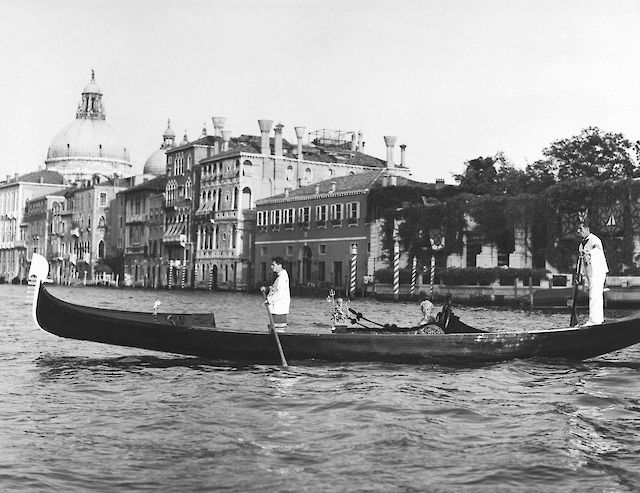
Peggy Guggenheim
Nigh Peggy
A short biography of Peggy Guggenheim.
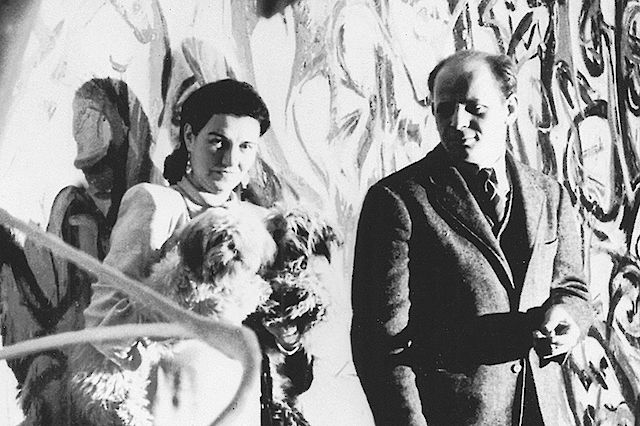
Peggy Guggenheim
Pollock's Landscape
In 1943 Peggy Guggenheim commissioned Jackson Pollock a painting, which was to be the largest Pollock ever fabricated.
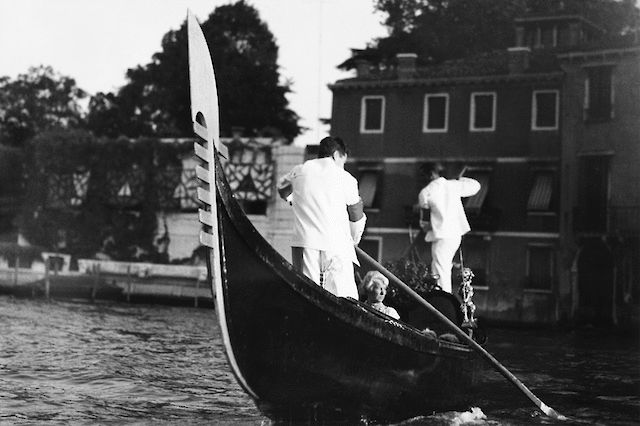
Peggy Guggenheim
On Venice
"To live in Venice or even to visit it means that you autumn in love with the city itself. There is zero left over in your eye for anyone else." (Peggy Guggenheim)
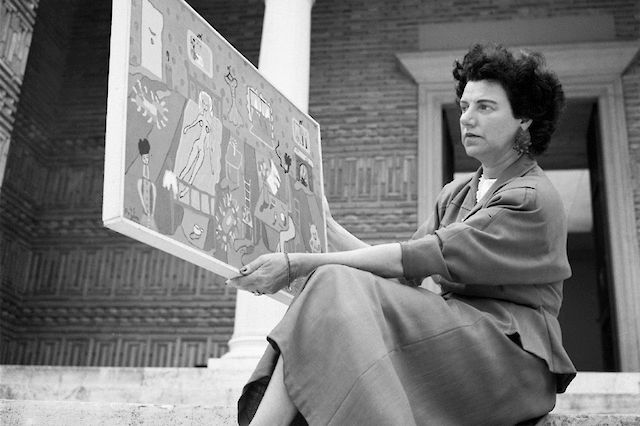
Peggy Guggenheim
1948 Venice Biennale
In 1948 Peggy Guggenheim exhibited her collection in the Greek Pavilion, then ravaged past the civil war.
Source: https://www.guggenheim-venice.it/en/art/in-depth/peggy-guggenheim/art-of-this-century/
0 Response to "Spring Salon for Young Artists Held at Peggy Guggenheim Museumgallery Art of This Century"
Postar um comentário